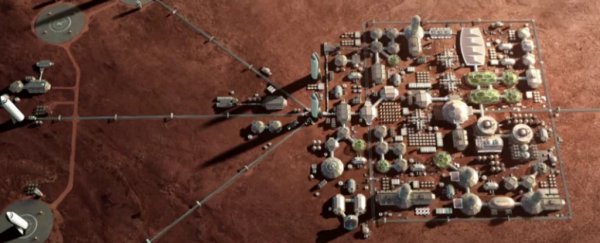Elon Musk plans to start colonising Mars within five years.
Musk tweeted on Monday that he would reveal "major improvements" to his plan at the International Astronautical Congress (IAC) in Adelaide, most likely in the shape of changes to a two-part, 40-storey-tall vehicle called the Interplanetary Transport System which is expected to take the first 100-200 people to the Red Planet.
When the presentation screen showed "2022", Musk felt the need to elaborate: "That's not a typo… although it is aspirational."

SpaceX plans to land at least two cargo ships on Mars in 2022, to "confirm water resources and identify hazards" and "place power, mining, and life support infrastructure for future flights".
Water resources are crucial to creating propellant to get ships and human cargo back to Earth.
In 2024, Musk wants to see four ships, two of which will be crewed with 100 people each, two of which will be cargo, make the three-month journey.
That mission will have the materials to build a propellant depot – solar panels, and mining equipment to draw and refine water and CO2.
Then the base begins to grow, starting with one ship:
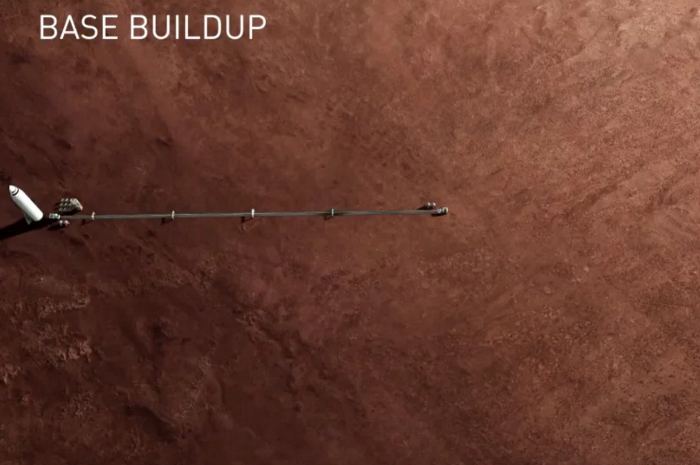 SpaceX/YouTube
SpaceX/YouTube
Then multiple ships:
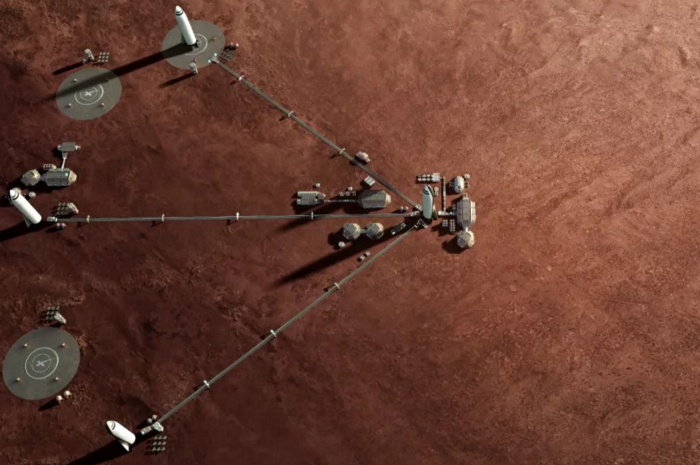 SpaceX/YouTube
SpaceX/YouTube
Then the city:
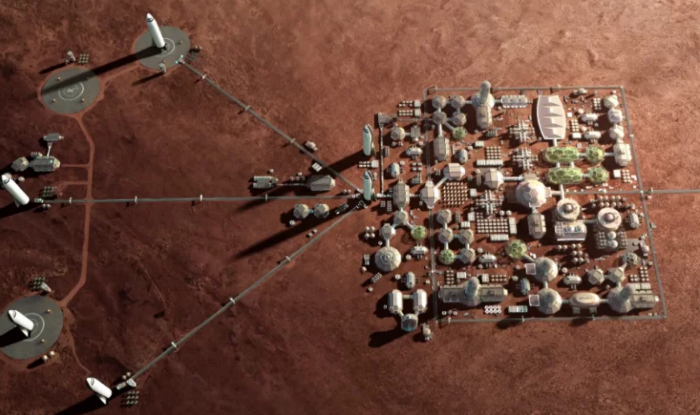 SpaceX/YouTube
SpaceX/YouTube
And the bigger city:
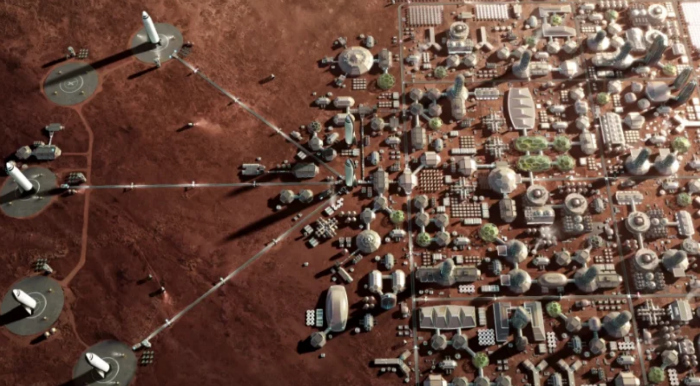 SpaceX/YouTube
SpaceX/YouTube
Musk said then came terraforming and "making it a nicer place to live", like this:
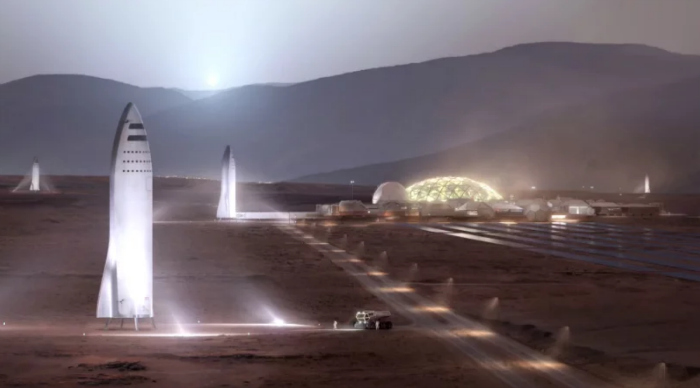 SpaceX/YouTube
SpaceX/YouTube
Musk first revealed the system at last year's IAC in Guadalajara, Mexico and the full colonisation plan was repeated in detail in a scientific journal in June.
However, his plans for this year's event were upstaged by Lockheed Martin, which, just hours before Musk was due on stage in Adelaide, revealed details of its Mars Base Camp concept at the IAC:
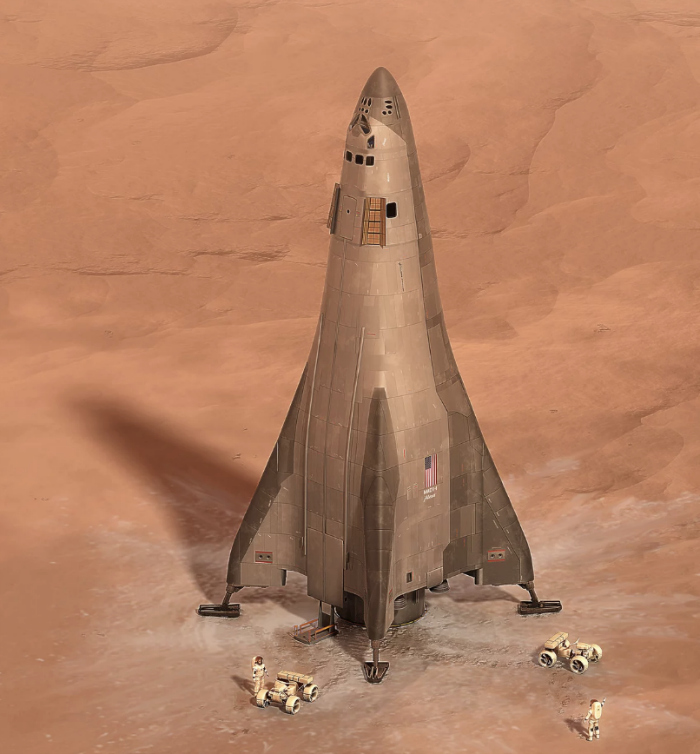 Lockheed Martin
Lockheed Martin
Lockheed plans to have humans in Mars within a decade, coordinating its effort with NASA's lunar Deep Space Gateway and a Mars surface lander.
About 50 minutes into Lockheed's presentation, Musk cancelled his press conference planned for after his own presentation.
But as it turns out, Musk's plan is now to hit Mars in 2022, and, as he told the crowd in Adelaide, "I think we've figured out how to pay for it".
Humans will make the trip in the BFR's shuttle module. Here's the latest layout:
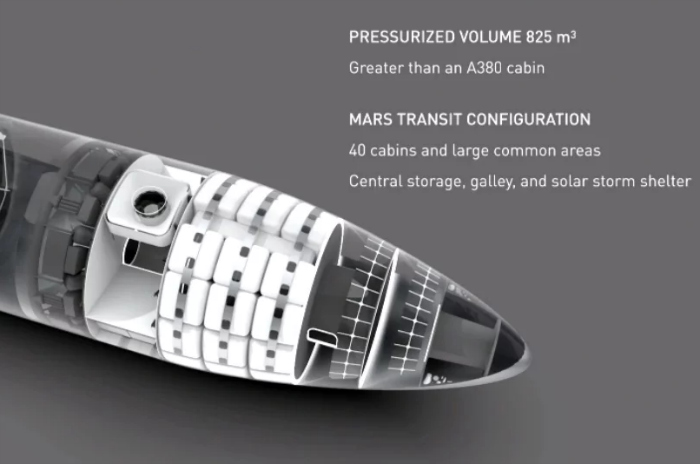 SpaceX/YouTube
SpaceX/YouTube
Getting the mission cost down to a realistic $US100,000 or less will rely heavily on SpaceX perfecting an "Automated Rendevous and Docking" system. The BFR will burn 150 tonnes getting to Low Earth Orbit, but another 150-tonne refill in space will take it "all the way to Mars".
"If the tanker has this reusability, you're then only paying for refilling the propellant," Musk said, adding it was "absolutely fundamental" to making the job cheaper.
Next year, Musk says we will see Dragon 2 show off its automated docking skills when it joins with the ISS with zero human intervention. "You can just press go and it will dock," he said.
Funding for the BFR will come from launching satellites and servicing the ISS. And yes, Musk has plans for the BFR to service the ISS, even though it hilariously dwarfs it in the process:
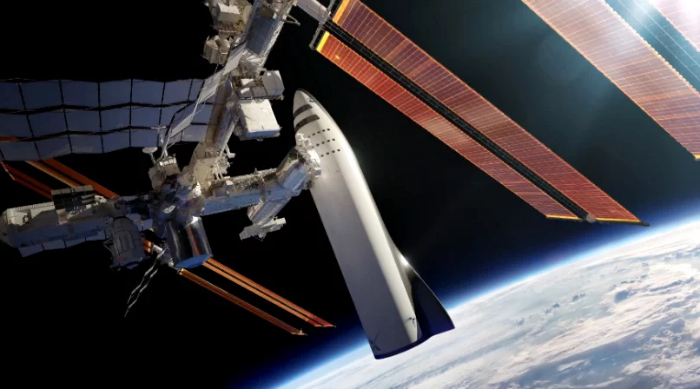 SpaceX/YouTube
SpaceX/YouTube
It really is a Big F**king Rocket when sat in an evolution of SpaceX vehicles:
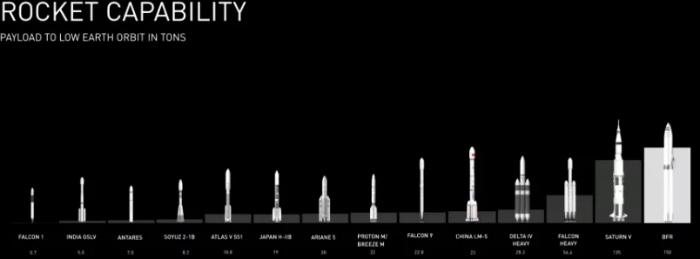 SpaceX/YouTube
SpaceX/YouTube
The cabin space will boast a pressurised volume greater than an A380, allowing for 40 cabins and common areas. Musk said for a three, six month jourmey "you'll probably want a cabin, not just a seat".
The cabin can actually hold five to six people, but two to three is the ideal, making the capacity around 100 people per flight.
The spacecraft will also include solar storm shelter, storage, galley, and entertainment areas.
And crucially, two landing engines, in case one fails. Musk, charmingly, calls that "minimising pucker".
This article was originally published by Business Insider.
More from Business Insider:
